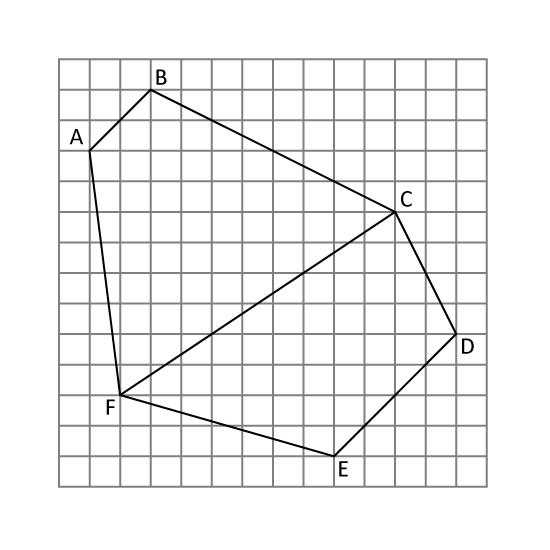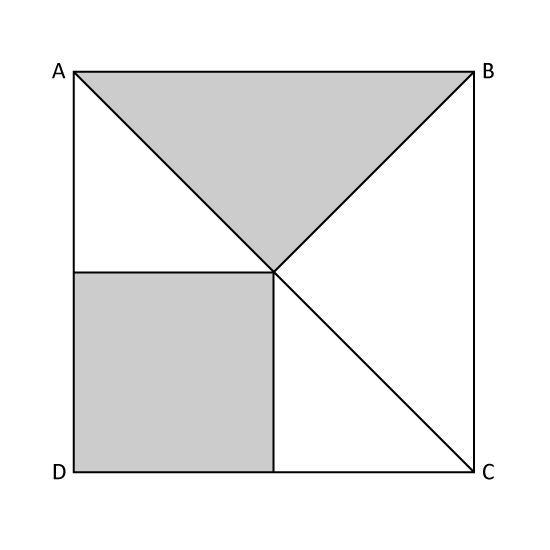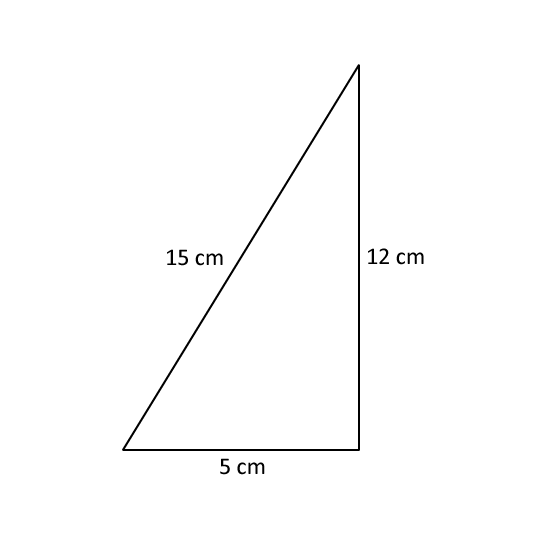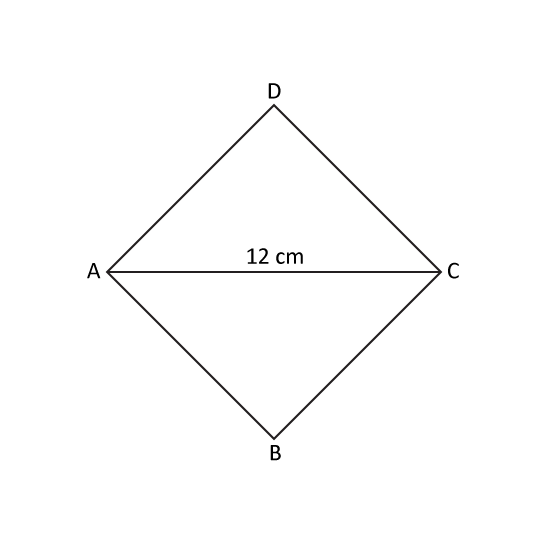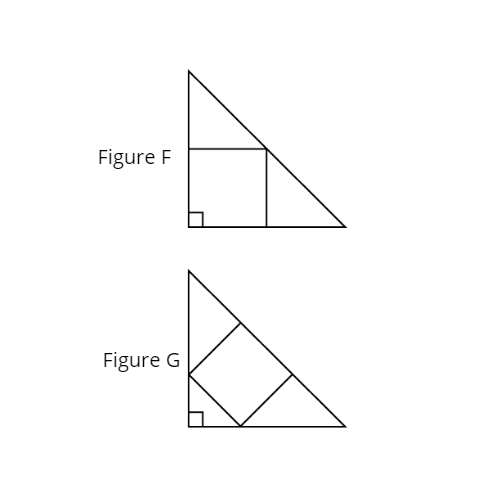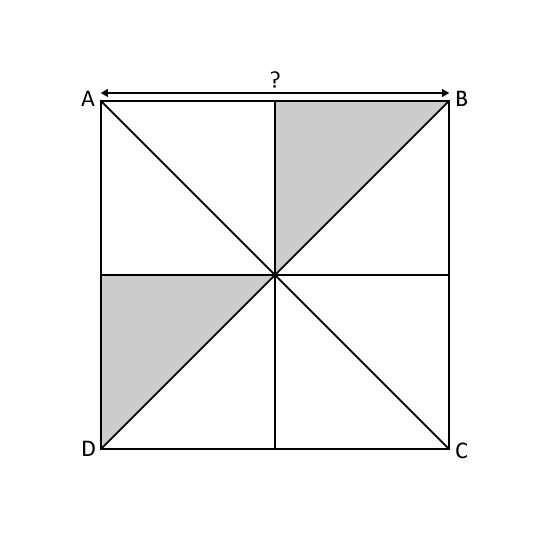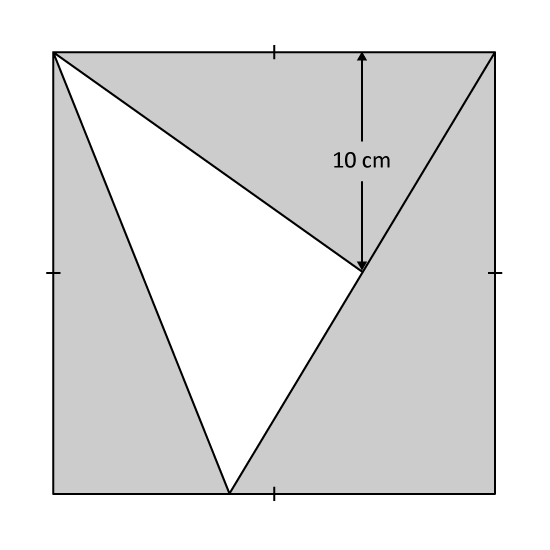Level 2
Look at the diagram shown. ABCD and EFGH are rectangles. How many sets of parallel lines are there?
Level 2
Look at the diagram shown. ABCD and EFGH are rectangles. How many sets of parallel lines are there?
Image in this question is not available.
Level 2 PSLE
A square ABCD is made up of 1 small square, 2 identical small triangles and 2 identical large triangles. What fraction of the square ABCD is shaded?
Level 2 PSLE
A square ABCD is made up of 1 small square, 2 identical small triangles and 2 identical large triangles. What fraction of the square ABCD is shaded?
Image in this question is not available.
Level 2
A piece of wire is used to bend a triangle as shown in the figure (not drawn to scale). It is then straightened and used to bend a square. What is the length of the square?
Level 2
A piece of wire is used to bend a triangle as shown in the figure (not drawn to scale). It is then straightened and used to bend a square. What is the length of the square?
Image in this question is not available.
Level 2
The figure shows a square ABCD. Given that AC = 12 cm, what is the area of the square?
Level 2
The figure shows a square ABCD. Given that AC = 12 cm, what is the area of the square?
Image in this question is not available.
Level 2
The figures F and G, are two identical isosceles triangles. Both figures contain a square of a different size. Given that the area of the square in Figure F is 252 cm2, find the area of the square in Figure G.
Level 2
The figures F and G, are two identical isosceles triangles. Both figures contain a square of a different size. Given that the area of the square in Figure F is 252 cm2, find the area of the square in Figure G.
Image in this question is not available.
Level 2
Square ABCD is made up of 8 identical triangles. The area of one shaded triangle is 50 m2. What is the length of AB?
Level 2
Square ABCD is made up of 8 identical triangles. The area of one shaded triangle is 50 m2. What is the length of AB?
Image in this question is not available.
Level 1 PSLE
A unit shape in the form of a right-angled triangle is drawn in the grid. Cindy forms a rectangle by joining two unit shapes as shown. In addition to the rectangle, Cindy wants to form a trapezium. This figure is to be formed with the smallest number of unit shapes. How many triangles are required to construct the smallest trapezium?
Level 1 PSLE
A unit shape in the form of a right-angled triangle is drawn in the grid. Cindy forms a rectangle by joining two unit shapes as shown. In addition to the rectangle, Cindy wants to form a trapezium. This figure is to be formed with the smallest number of unit shapes. How many triangles are required to construct the smallest trapezium?
Image in this question is not available.
Level 1
In the figure, ABCD is a square. CEF and AEF are isosceles triangles and ∠BAE = 25°. Find ∠AFE.
Level 1
In the figure, ABCD is a square. CEF and AEF are isosceles triangles and ∠BAE = 25°. Find ∠AFE.
Image in this question is not available.
Level 2
The figure shows a square of sides 30 cm. Find the total area of the shaded parts.
Level 2
The figure shows a square of sides 30 cm. Find the total area of the shaded parts.
Image in this question is not available.
Level 2 PSLE
AB and BC form two sides of a trapezium ABCD drawn on a square grid inside a box. By joining dots on the grid with straight lines, identify Point D to complete the trapezium ABCD such that AD is longer than BC.
Level 2 PSLE
AB and BC form two sides of a trapezium ABCD drawn on a square grid inside a box. By joining dots on the grid with straight lines, identify Point D to complete the trapezium ABCD such that AD is longer than BC.
Image in this question is not available.
